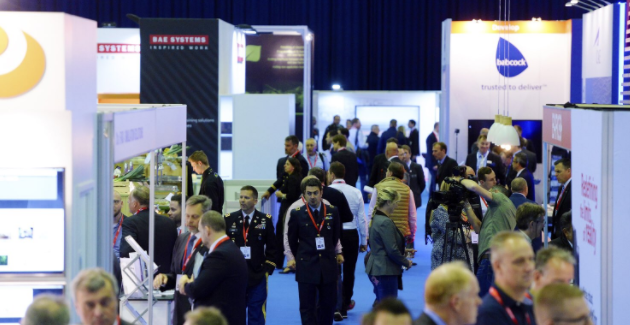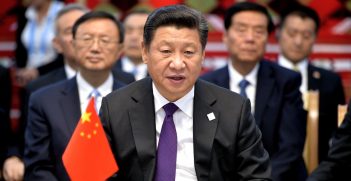Start-Ups and the Defence Technology Race

Australia is straddling a defence technology divide between the US and China. Taking better care of homegrown defence industry start-ups may be one way to ensure Canberra doesn’t risk falling further behind.
In the past decade, international approaches to defence innovation have undergone significant change. Australia needs to adapt to maintain its technological edge. The game-changing technologies of today and tomorrow are coming not only from large multinational corporations and state-run research agencies; increasingly, they’re also coming from start-up companies. However, it’s rare that a start-up can ‘bootstrap’—self-fund—itself to success. So, where does a defence, security or intelligence entrepreneur go for assistance these days?
When Malcolm Turnbull became prime minister, there was a wave of enthusiasm for ‘innovation’. The word seemed to have infected every policy document coming out of Canberra. First there was the National Innovation and Science Agenda (NISA) announced in December 2015. In September 2016, Innovation and Science Australia (ISA) was introduced to parliament. Minister for Defence Industry, Christopher Pyne, launched the Defence Innovation Hub ($640m) and the Next Generation Technologies Fund ($730m) in December 2016 and March 2017, respectively.
In April last year, Turnbull and Chinese Premier Li Keqiang unveiled the Torch Innovation Precinct at the University of New South Wales. Eight Chinese companies together invested an initial $30 million to support Australian research in advanced materials, biotechnology, energy and environmental engineering. This extension of the ‘Torch’ high-technology industry development program outside China was a first and the program is backed by the Chinese Ministry of Science and Technology.
The CIA cottoned on to the importance of start-ups a while ago and created In-Q-Tel (IQT), a somewhat secretive venture capital firm. One of IQT’s earliest investments was in social media technology company Palantir, now celebrated as a ‘tech unicorn’, a term used for start-ups that have grown to be worth more than US$1 billion (AU$1.34 billion). Other IQT investments have included start-ups working on decentralised mobile networks, location-based social media monitoring, satellite imagery, data science, and ultra-low-power wireless sensor solutions.
The Pentagon recently went the same way, creating the Defense Innovation Unit Experimental (DIUx), a start-up seeding unit based in Silicon Valley. Former US Secretary of Defense Ashton Carter placed a high priority on building bridges between the Pentagon and Silicon Valley and pushed to create a vehicle for getting around the cumbersome procurement processes embedded in the Pentagon. The Australian defence innovation system, including the Defence Innovation Hub and Next Generation Technologies Fund, is similar to the US approach. While that’s exciting and will go a long way towards promoting Australia-based start-ups and defence technology, the US and Australian programs are not the only funding vehicles looking to capture new defence technologies through start-up investments.
Part of the defence research evolution has been driven by the vast profits available to successful start-ups. However, it’s also attitudinal. To put it one way, it’s a question of whether someone who smokes marijuana can get a security clearance. As Ashton Carter said in an interview with Wired, “We need to be realistic. Some behaviours that in past times might have been predictive of instability or espionage or a propensity to be blackmailed are simply not in that category anymore.” How do governments sidestep the lifestyle requirements that might otherwise exclude some of the best minds from contributing to innovation?
Seeding start-ups for specific projects is one way of getting around this problem. However, seeding and contracting for a specific project is not the same as providing substantive venture capital. When a start-up needs to raise millions of dollars to cross the ‘valley of death’ between proof of concept and global scale, where does the money come from?
In the United States, there were US$9.9 billion worth of start-up funding rounds in 2015, in which Chinese venture capital (VC) firms played an increasing part. Notably, the 2015 funding rounds were four times larger than in 2014.
In June 2016, Haiyin Capital invested in Neurala, a company with AI software that focuses on unmanned aerial vehicles and self-driving cars. Neurala also has contracts with NASA and the US Air Force. The New York Times traced Haiyin Capital to a Chinese state-run company called Everbright Group. Haiyin Capital has also invested in XCOR Aerospace, a US company working on spacecraft and engines. AGIC Capital, cofounded in 2015 by Henry Cai (sometimes called the ‘godfather of Chinese capital markets’), is driving investment in European companies to bring advanced technologies to China. In June 2016, AGIC paid US$113 million for a majority stake in an Italian robotics manufacturer. None of this investment activity is illegal, but when complemented by illicit cyber intrusions and export control violations, it forms a concerning pattern.
Australia is straddling an advanced technology divide between the US and China. The rise of Chinese VC funding is creating formal channels of technology transfer and adding layers of complexity to the US-China rivalry. By the time the next game-changing technology makes it onto a strategic trade controls list, it will probably already be owned by China. That reality is something Australia now needs to contend with.
Thom Dixon is a young leader with the CSIS Pacific Forum and a project officer within the Office of the Deputy Vice-Chancellor (Research) at Macquarie University.
This article is published under a Creative Commons Licence and may be republished with attribution.





